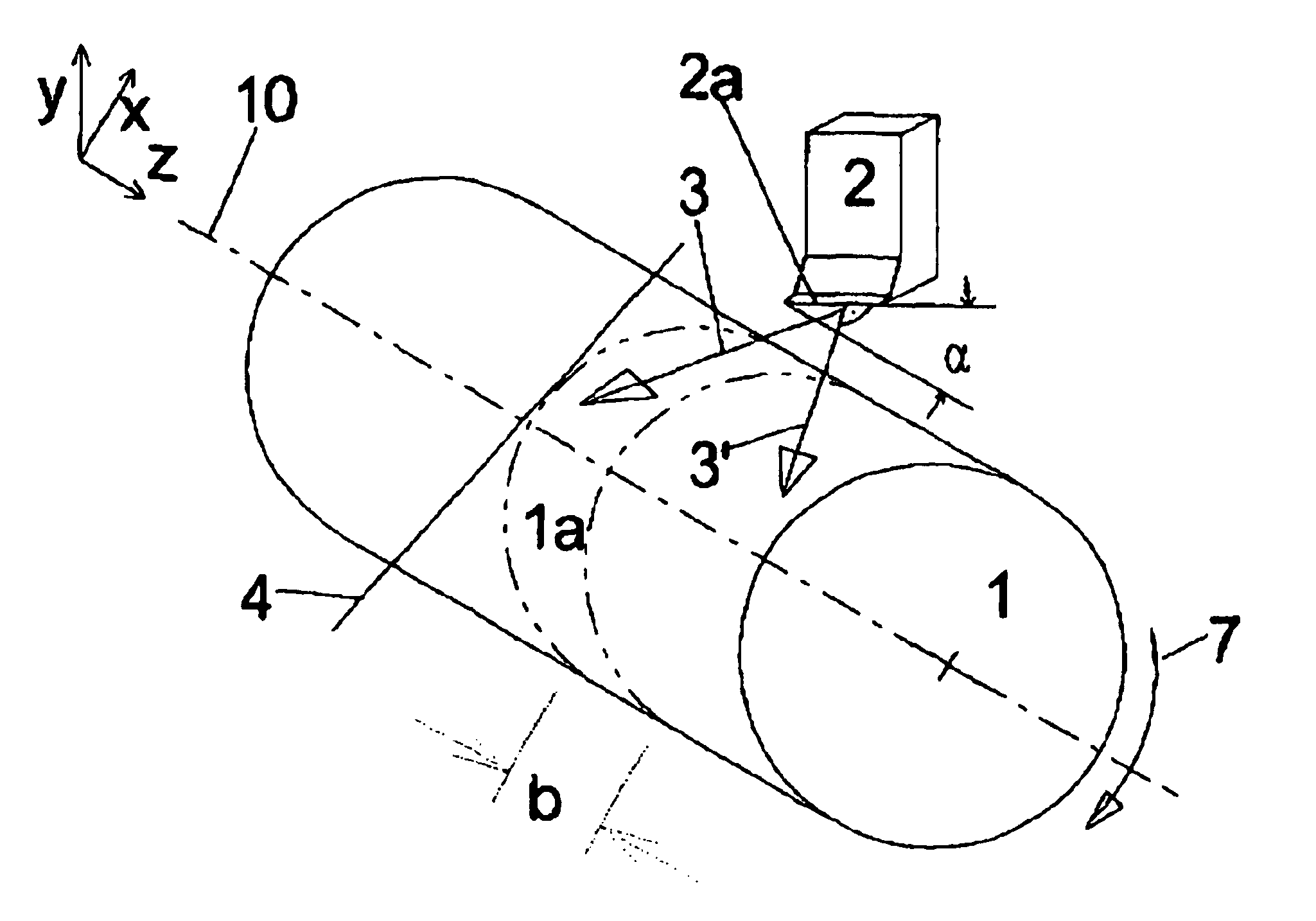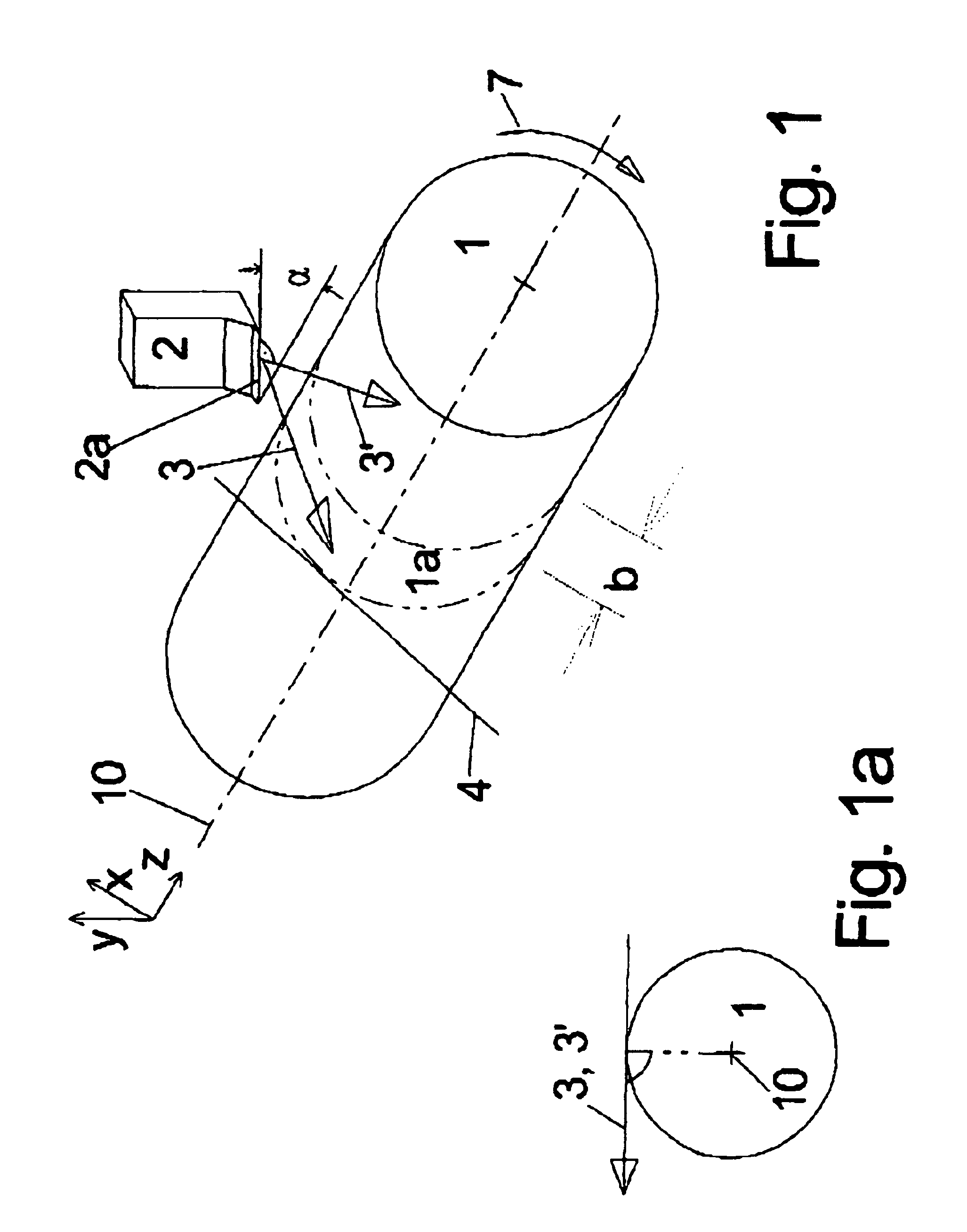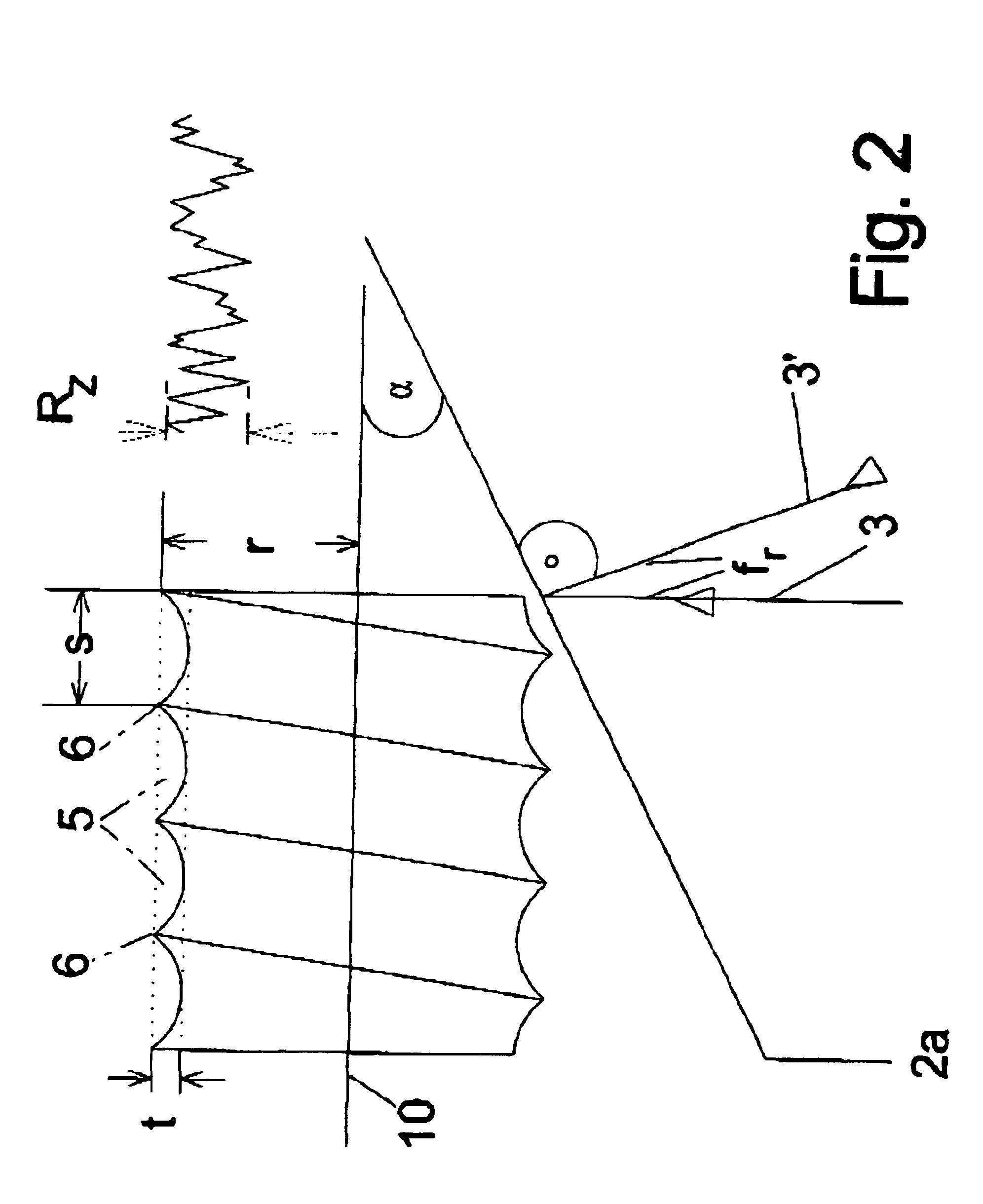Method for scroll-free machining rotationally symmetrical surfaces
a technology of rotationally symmetrical surfaces and cutting machining, which is applied in the direction of turning machines, turning machines accessories, turning apparatuses, etc., can solve the problems relatively slow machining advance or and the effect of low level of machining outpu
- Summary
- Abstract
- Description
- Claims
- Application Information
AI Technical Summary
Benefits of technology
Problems solved by technology
Method used
Image
Examples
Embodiment Construction
[0033]With a uniform advance feed f, expressed in mm / revolution of the workpiece, the result is a helical groove 5, the pitch spacing of which in the direction of the axis of rotation 10 is constant, with a uniform feed f. In this respect, it will be seen that the depth t′ of those grooves depends on the size of the corner radius rE of the cutting tool producing the shape: the greater that corner rE is, the correspondingly shallower are the flanks of the groove and thus the depth t′ becomes correspondingly less. The relationship in terms of a formula reads as follows: t=f28·rE
[0034]In this respect, setting at least one of the edges of the cutter, in particular the secondary cutter, which lead to the cutter corner, at the smallest possible angle, preferably parallel, with respect to the direction of the axis of rotation 10, generally involves the only viable option for minimising the depth t′ as, by virtue of predetermined cycle times etc in production the feed f cannot be reduced ju...
PUM
| Property | Measurement | Unit |
|---|---|---|
| Angle | aaaaa | aaaaa |
| Angle | aaaaa | aaaaa |
| Angle | aaaaa | aaaaa |
Abstract
Description
Claims
Application Information
 Login to View More
Login to View More - R&D
- Intellectual Property
- Life Sciences
- Materials
- Tech Scout
- Unparalleled Data Quality
- Higher Quality Content
- 60% Fewer Hallucinations
Browse by: Latest US Patents, China's latest patents, Technical Efficacy Thesaurus, Application Domain, Technology Topic, Popular Technical Reports.
© 2025 PatSnap. All rights reserved.Legal|Privacy policy|Modern Slavery Act Transparency Statement|Sitemap|About US| Contact US: help@patsnap.com



